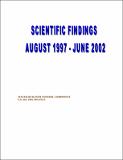| dc.description.abstract | Water hyacinth –Eichhornia crassipes (mart) Solms (Pontederiaceae), is widely recognized as the world worst aquatic weed. Likewise, water hyacinth is considered to be the most serious aquatic weed in Tanzania. This free floating plant of South American origin (Jayanth, 1988; Bennet, 1967) was gazetted as a noxious weed in Tanzania for the first time in 1955 in river Sigi and 1964 in river Pangani. In recent years, water hyacinth has spread faster and the most serious infestation is in Lake Victoria (Labrada, 1995). In 1995 about 700 ha of the shoreline including bays and gulfs were infested with water hyacinth and by 1998 the coverage was estimated at 2000 ha (LVEMP, 1999). The growth and spread of water hyacinth posed environmental and socio-economic problems related to the use and management of water resources in Lake Victoria and its basin
To mitigate the water hyacinth problem in Tanzania and Lake Victoria in particular, IPM strategies with emphasis on biological control programme were initiated in 1997. This was done under Lake Victoria Environment Management Project (LVEMP), which is a comprehensive environmental programme that is regional in coverage. Each of the riparian countries (Kenya, Uganda, and Tanzania) carries out water hyacinth control in the Lake Victoria within her boundaries. This paper discusses the use of IPM strategies to control water hyacinth in Tanzania focusing on success achieved so far. | en_US |

